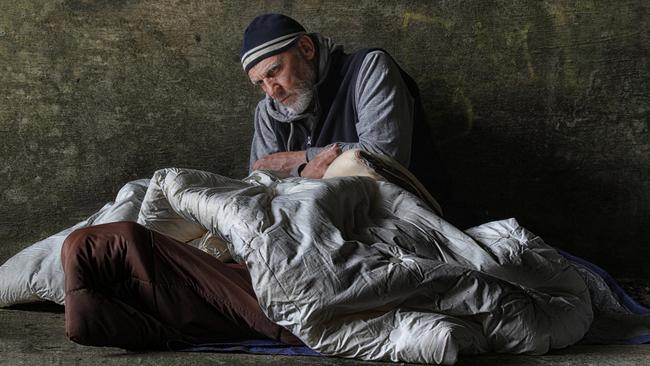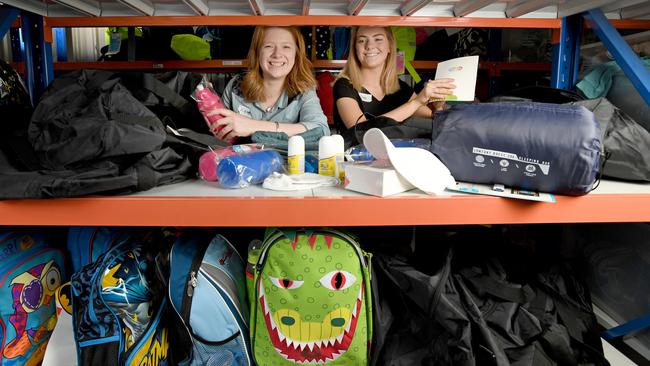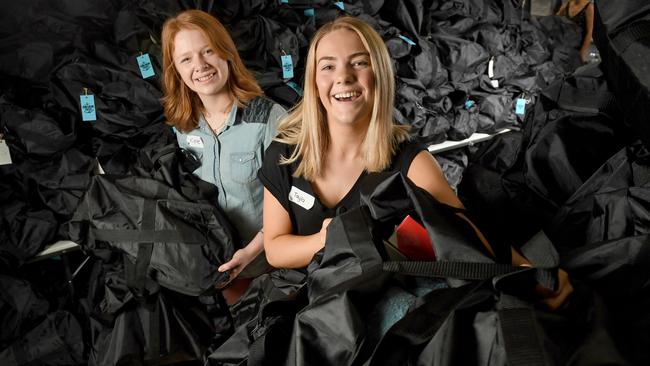Worrying rise of vulnerable homeless and jobless people sleeping rough in Adelaide
THE visible face of homelessness in ‘liveable’ Adelaide is just the tip of the iceberg, as a new vulnerable group emerges, writes Rebecca Baker.
SA News
Don't miss out on the headlines from SA News. Followed categories will be added to My News.
- Shelter SA warns of ‘tsunami of rough sleepers’
- Thousands of older South Australians could become homeless
- David Penberthy: We’re miserably callous about the homeless
- Adelaide commits to functional zero homelessness
YES, life is busy. It can be stressful to work out the logistics of getting kids to after-school sports or dance commitments, do the grocery shopping, cook dinner — and meet the work deadline.
Let alone catch up with an old friend for a pre-Christmas bubbly.
It is hectic, exhausting even … and then you pass by the man who has set up camp amid a river of cigarette butts several doors from your work with the wild Jesus hair and sad eyes.
You are reminded that actually, your life is pretty damn good. You have a job, a roof over your head, hot water at night, food to waste. Your children want for nothing.
Incredibly, while this man’s situation can be confronting, he represents just the tip of homelessness in the fifth most liveable city in the world.

For he and the other “rough sleepers” — there are about 100 people sleeping rough on Adelaide’s streets each night — account for just five per cent of the state’s homeless, according to SA Shelter’s Dr Alice Clark.
“When most people think about homelessness, a picture comes to mind of a person sleeping on a bench out in the park … so much messaging we see around homelessness plays into these stereotypes,” she said.
“And of course these types of people experiencing homelessness are very visible to the public and to all of us walking around in the city and we should be concerned for them but we should also be concerned for the other 95 per cent of South Australians who find themselves without somewhere safe to stay.”
Because, she says, too many people simply don’t get it: homelessness doesn’t discriminate and each year 26,000 South Australians seek help — many more don’t.
“There are families, people who are single, young, old, people with disabilities, people with mental health issues … we get calls every day here from people who have nowhere to sleep,” she said.
“The reality is most of us are closer than we think … a relationship breakdown, an accident, losing some hours at work, the illness of a child and suddenly that could be us, where we can’t afford to feed our children and we have to say ‘no’ to extra activities outside of school.”
Homelessness includes anyone in a “temporary, insecure and not very desirable place to stay”.
“Alarmingly, about 40 per cent of people experiencing homelessness are young people, from babies, to toddlers and little school-age children through to the age of 24. I find that number really alarming and, sadly, some of these are falling through the cracks,” Dr Clark said.
Organisations such as HYPA — Helping Young People Achieve — know this better than most, assisting several thousand young people access and maintain “safe and appropriate accommodation” each year.
The not-for-profit recently joined with Adelaide charity BackPacks 4 SA Kids to fill 1000 backpacks with “essentials” to help young people aged between 15 and 25 who find themselves homeless, providing everything from toiletries to a towel, mobile phone and USB, so they can save a job resume on it.

It is believed to be the first program of its kind in Australia — made possible through a $100,000 grant from IMPACT SA — and the rollout is being closely watched.
“This program is awesome and we are very excited to be part of it … it can be tricky, especially coming into summer when you don’t even have a pair of shoes,” HYPA’s
Partnerships Assistant Kate McLaughlin said.
“Our aim is to encourage independence and help these young people stand on their own two feet.”
There is another emerging face of homelessness, locally as well as across the globe.
“These are women who have been married, they’ve had children — they are mums — they’ve had a career, they are educated,” Dr Clark says.
“These are a generation of women who, if for some reason their relationship breaks down, they get divorced or sadly a spouse dies, and they can’t remain in a family home, or don’t have enough superannuation to live on, just can’t afford to establish themselves in a private rental. They are not the stereotypical face of homelessness.”
Louise Casey, the United Kingdom-based chair of the Institute of Global Homelessness, agrees.
“There is a worrying rise in the number of older people, especially women, who are on the streets, and you won’t necessarily see them begging outside a bank or coffee shop ... but they are there at midnight and we have no solution to that,” she said.
Adelaide woman Wendy Morgan was 50 when she lost her job as a laboratory technician in 2012 when the manufacturer she worked for closed down.
At first, she wasn’t too worried, thinking she’d pick up work elsewhere — she was university educated, had good skills and a rich work history, after all.
“I had periods of unemployment in the past but nothing that extended beyond a few months ... I’d always managed to find work,” she said.
But a new gig didn’t eventuate and when her savings were eaten up, she couldn’t pay her rent, was evicted and one year on, found herself living in her car.
“It was terrifying … it was really, really scary just trying to find a spot to park where I felt safe,” she said.
Ms Morgan, who is now 56, says she felt demoralised, lonely and isolated.
“I was just really ready to end it, I became suicidal, literally ... all I wanted to do was to just end it. I had nowhere to turn and couldn’t see a way out,” she recalls.
Eventually she found help and a place to live and while she hasn’t been able to find another job is now offering tutoring in chemistry and maths.
“It was quite overwhelming to have a roof over my head (again), to just access a shower and be somewhere I could shut the door and feel safe inside,” she said.
More housing — as well as employment options — is key, believes SA Shelter’s Dr Clark.
“Public housing has been decimated in this state over the past 20 years to the point we have lost more than 20,000 properties,” she says.
“This year we’ll lose another 650. It makes no sense to me … the people who need access to this sort of housing are falling into other systems (such as prisons, mental health, hospitals) and that institutional, clinical care is very expensive.
“It is very frustrating and things are getting worse for people.”
She might find an advocate in Labor MP Nat Cook who, at a recent media event on homelessness, said: “Shelter forms a part of dignity which can’t be replaced by anything else ... if people don’t have housing and shelter, people don’t have wellbeing, they don’t have choices and opportunities in life.”

FILLING A BACKPACK FOR A PERSON IN NEED
The top (most in demand) items are:
■ A mobile phone
■ Hygiene products
■ Soap
■ Shampoo
■ Roll-on deodorant
■ Feminine products
■ Socks and underwear
■ Thongs
■ Gift cards (supermarkets/essentials cards)
■ Adelaide Metrocards
■ Condoms
■ Sleeping bags
■ Anything to protect from the elements, particularly as we come into summer — sunscreen, hats, insect repellent


